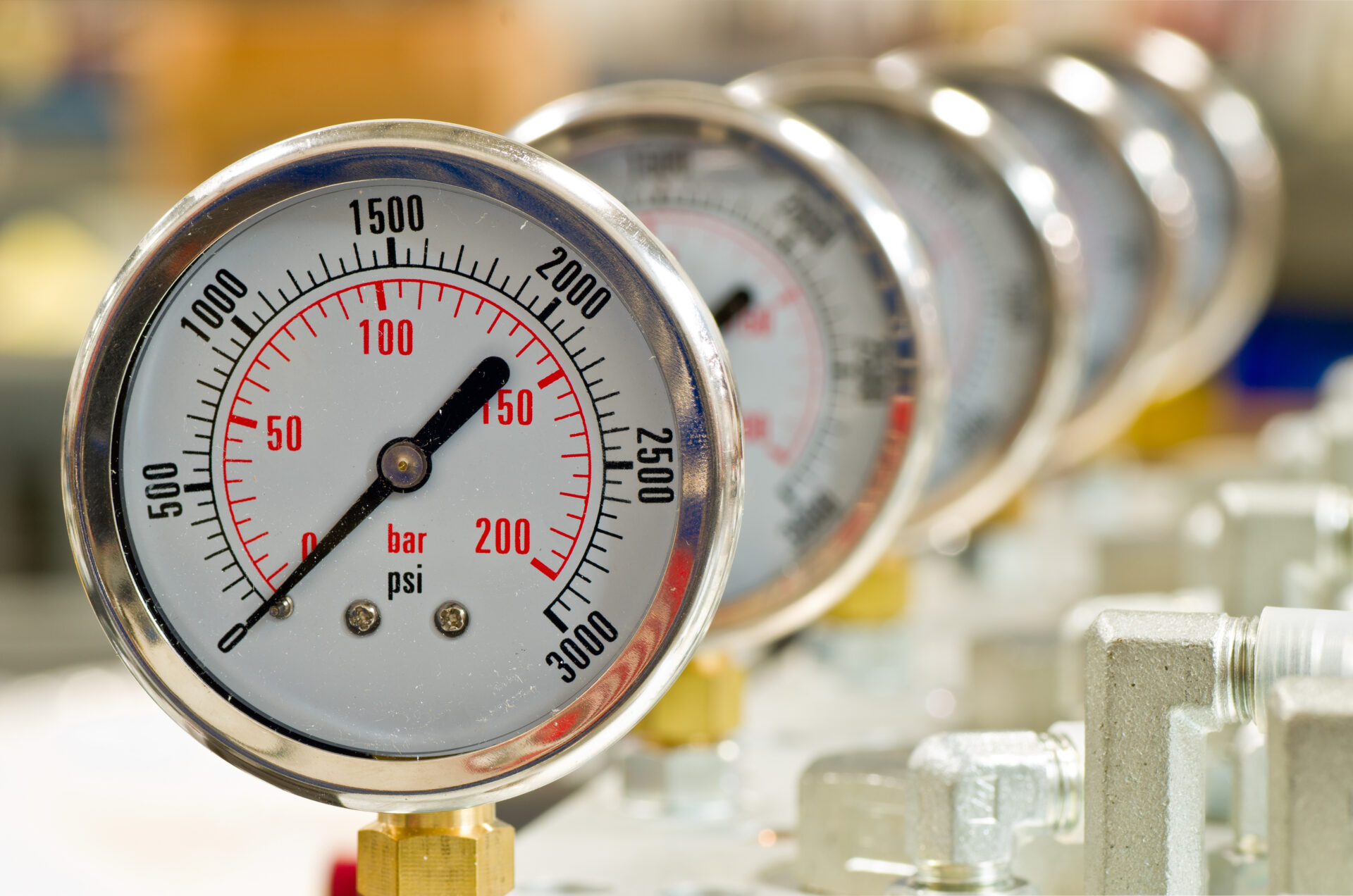
Mud gauges play a crucial role in ensuring the accuracy and efficiency of drilling operations. Here, we’ll shed some light on the purpose of mud gauges while providing key information on which mud gauges are most common, the differences between liquid and dry pressure gauges, and the dissimilarities between piezometers and pressure gauges.
What Are Mud Gauges?
A mud gauge is an instrument used to measure the pressure applied to drilling fluids (typically called “mud” within the industry). These gauges help operators monitor and regulate mud pressure levels while drilling, essential for avoiding accidents, maintaining efficiency, and preventing formation damage. Overall, mud gauges help maximize drilling performance while minimizing risks.
The Four Types of Pressure Gauges:
Pressure gauges and their usage vary based on the application (i.e. commercial or industrial). The most common types of pressure gauges include:
Bourdon Tube Pressure Gauge: Bourdon tube pressure gauges are characterized by a curved, elastic metal tube (typically made of brass or stainless steel). During operations, pressure changes cause the tube to shift, transmitting motion to the attached magnifying mechanism, which then displays the pressure level. Bourdon tube pressure gauges are reliable, durable, and cost-effective, making them the most widely used gauge in the drilling industry.
Diaphragm Pressure Gauge: Diaphragm pressure gauges rely on a thin, elastic diaphragm that deforms under pressure changes. This deformation, typically converted into mechanical movement via a sealed hydraulic fluid system, is displayed on the gauge scale. Diaphragm gauges are commonly used in low and medium-pressure situations and are perfect for drilling.
Bellows Pressure Gauge: This type of gauge uses a collapsible metal bellows that expands or contracts with applied pressure. The bellows’ movement transfers to the attached magnifying mechanism, providing a reading on the gauge. Bellows gauges are ideal for measuring high pressure and extreme temperature conditions, often encountered in the drilling industry.
Capsule Pressure Gauge: Capsule pressure gauges consist of two flexible metal diaphragms sealed together to create a capsule. When pressurized, the imbalance between the inside and outside of the capsule creates displacement, which is indicated on the gauge. Capsule gauges are suitable for measuring low pressures and vacuum applications, such as monitoring the suction side of drilling equipment.
Liquid vs. Dry Pressure Gauges
Choosing between liquid and dry pressure gauges will depend on the specific application and surrounding environmental conditions. Liquid-filled pressure gauges contain a viscous substance (usually glycerin) that offers several advantages, including vibration absorption, dampening needle oscillation and increased readability. It also enhances gauge longevity by keeping the internal parts lubricated. However, liquid-filled gauges may not be suitable for certain applications as they may leak and/or freeze in extremely cold weather.
On the other hand, dry pressure gauges do not contain any liquid and are suitable for applications where leakage cannot be tolerated. Despite their simplicity, dry gauges are susceptible to vibrations and might require frequent recalibration service. However, their affordability and ease of installation make them a popular choice in many drilling scenarios.
Differences Between a Piezometer and a Pressure Gauge
Piezometers and pressure gauges serve distinct purposes when it comes to drilling operations. For instance, a pressure gauge measures the actual pressure of the drilling fluid, providing real-time data to drilling operators. It allows continuous monitoring and adjustment of mud pressure, ensuring optimal drilling conditions and preventing potential problems.
In contrast, a piezometer measures pore water pressure (piezometric level) within the ground formations surrounding a wellbore. Using a piezometer, operators can assess the pressure exerted on the drilling fluid by the surrounding formations. This information helps in the design, planning, and overall safety of drilling operations, ensuring the stability and integrity of the wellbore.
Mud gauges are essential for operators looking to optimize drilling performance and enhance safety. As such, Contact Instruments is a proud manufacturer and supplier of mud gauges engineered to withstand harsh, high-temperature and contaminated environments. If you want to reduce downtime with premium mud pressure gauges and drilling mud pumps, contact us today.
